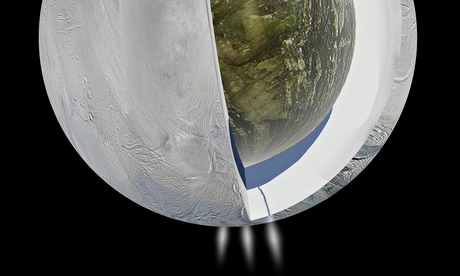Scientists have moved a step closer to the goal of creating stem cells perfectly matched to a patient's DNA in order to treat diseases, they announced on Thursday, creating patient-specific cell lines out of the skin cells of two adult men.
The advance, described online in the journal Cell Stem Cell, is the first time researchers have achieved "therapeutic cloning" of adults. Technically called somatic-cell nuclear transfer, therapeutic cloning means producing embryonic cells genetically identical to a donor, usually for the purpose of using those cells to treat disease.
In a cloning first, scientists create stem cells from adults
This Fish Crawled Out of the Water…and Into Creationists' Nightmares
 We all know the Darwin fish, the car-bumper send-up of the Christian "ichthys" symbol, or Jesus fish. Unlike the Christian symbol, the Darwin fish has, you know, legs. Har har.
We all know the Darwin fish, the car-bumper send-up of the Christian "ichthys" symbol, or Jesus fish. Unlike the Christian symbol, the Darwin fish has, you know, legs. Har har.
But the Darwin fish isn't merely a clever joke; in effect, it contains a testable scientific prediction. If evolution is true, and if life on Earth originated in water, then there must have once been fish species possessing primitive limbs, which enabled them to spend some part of their lives on land. And these species, in turn, must be the ancestors of four-limbed, land-living vertebrates like us.
UK scientists make body parts in lab
 In a north London hospital, scientists are growing noses, ears and blood vessels in the laboratory in a bold attempt to make body parts using stem cells.
In a north London hospital, scientists are growing noses, ears and blood vessels in the laboratory in a bold attempt to make body parts using stem cells.
It is among several labs around the world, including in the U.S., that are working on the futuristic idea of growing custom-made organs in the lab.
While only a handful of patients have received the British lab-made organs so far— including tear ducts, blood vessels and windpipes — researchers hope they will soon be able to transplant more types of body parts into patients, including what would be the world's first nose made partly from stem cells.
Physicist Who Put Bang in Cosmos Seeking Other Universes
 Entering the Massachusetts Institute of Technology’s Center for Theoretical Physics by the front door, one passes more than a dozen well-used blackboards, meeting areas and offices before finding Alan Guth’s.
Entering the Massachusetts Institute of Technology’s Center for Theoretical Physics by the front door, one passes more than a dozen well-used blackboards, meeting areas and offices before finding Alan Guth’s.
So when Harvard University astrophysicist John M. Kovac in February wanted to secretly meet with Guth, the originator of a key theory explaining the cosmos, he climbed up a stairway of MIT’s Building 6 and slipped through a back door on the third floor. Kovac, 43, then revealed a discovery that has since made Guth a star theoretical physicist.
Ocean discovered on Saturn's moon may be best place to look for alien life
 Researchers have discovered a deep saltwater ocean on one of the many small moons that orbit Saturn, leading scientists to conclude it is the most likely place in the solar system for extraterrestrial life to be found.
Researchers have discovered a deep saltwater ocean on one of the many small moons that orbit Saturn, leading scientists to conclude it is the most likely place in the solar system for extraterrestrial life to be found.
Gravitational field measurements taken by Nasa's Cassini space probe revealed that a 10km-deep ocean of water, larger than Lake Superior, lurks beneath the icy surface of Enceladus at the moon's south pole.
David Stevenson, a planetary scientist at the California Institute of Technology in Pasadena, said the body of water was so large it "may extend halfway or more towards the equator in every direction. It might even extend all the way to the north."
After more than a century, a jewel of ocean research targeted for closure
For more than a century, federal scientists have worked on Pivers Island near the historic town of Beaufort, N.C., and the beaches of Emerald Isle studying the ocean, and the fish, turtles and dolphins of its sea grass estuaries and rocky reefs.
Surrounded by three university labs, it’s one of a handful of oceanography hubs in the nation and the only government research center between New Jersey and Miami studying Atlantic fish populations.
Scientists offer new 360-degree glimpse of the Milky Way galaxy
 In creating a zoomable, 360-degree portrait of the Milk Way galaxy, University of Wisconsin scientists have offered new insight into the structure and contents of the spiral star system.
In creating a zoomable, 360-degree portrait of the Milk Way galaxy, University of Wisconsin scientists have offered new insight into the structure and contents of the spiral star system.
To create the holistic portrait, Wisconsin astronomers pieced together 2 million cosmic images collected by NASA’s Spitzer Space Telescope. The team unveiled their impressive galactic collage today at a TED conference in Vancouver.
More Articles...
Page 18 of 61

 Science Glance
Science Glance






























